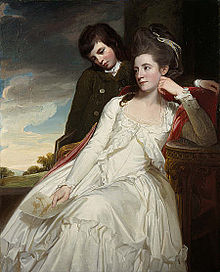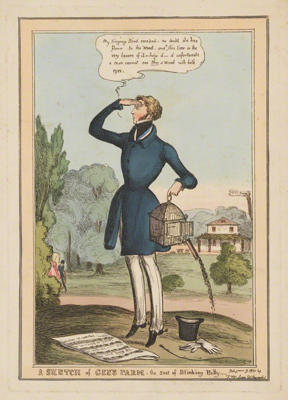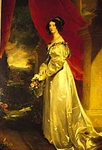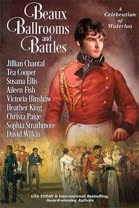Regency Personalities Series
In my attempts to provide us with the details of the Regency, today I continue with one of the many period notables.
Jane Gordon Duchess of Gordon
1748 or 1749 – 14 April 1812

Jane Gordon
Jane Gordon Duchess of Gordon was the fourth child of Sir William Maxwell, 3rd Baronet of Monreith, and his wife Magdalene Blair. She was born at Myrton Castle the now ruined castle a short distance from the present seat of the family, Monreith House, which was not built until fifty years later.
Her father has been depicted as a drunk who allowed his family to exist in poverty in Edinburgh while he sold most of his 30,000-acre (12,000 ha) estate to make ends meet. In Edinburgh Jane lived together with her mother and her two sisters in a rented second-floor flat in Hyndford’s Close near Royal Mile. As for the family living in an Edinburgh apartment, that would have been normal at that time. Titled Scottish land owning families often rented apartments in Edinburgh so their girls could receive further education, be launched on Edinburgh Society, and attend the balls. This is exactly what happened when Lady Maxwell moved there in 1760 with her three daughters: Catherine, 13; Jane, 11; and Eglantine, 9, the future Lady Wallace of Craigie.
The Monreith Maxwells would have been considered a respectable family in that era. They were closely related to the Maxwells at Caerlaverock, Earls of Nithsdale who in the 17th Century had been considered one of the most powerful families in Scotland. And their grandmother was the daughter of the 9th Earl of Eglinton, head of the great Ayrshire land owning family and distinguished Member of Parliament.
Jane had a nasty accident as a 14 year-old when playing in the High Street in Edinburgh. She somehow got a finger of her right hand jammed in the wheel of a cart which moved away and tore her finger off. There is at Monreith House a letter written, left handed, by her after the accident explaining how it happened. After this, whenever possible, she wore gloves in which a wooden finger replaced the one missing. One of these wooden fingers is still at Monreith House. In later life she used to explain the loss of the finger by saying it was a coaching accident.
When Jane reached 16, she was so strikingly beautiful that a song was written about her: “Bonnie Jennie of Monreith, the Flower of Galloway”. That was also when she fell in love for the first and probably only time. The object of her affections was a young officer who was probably a Fraser, a relative of Lord Lovat. Soon after they met, he left with his regiment, probably to go to America, and word later reached her that he had died.
On 28 October 1767 Jane married the 24-year-old Alexander Gordon, 4th Duke of Gordon. The young Duke lived in the Gordon townhouse almost opposite the Maxwells, and he had inherited a considerable fortune and the title at the age of nine.
It was while they were on honeymoon at the Fordyce’s country seat, Ayton in Berwickshire, that she received a note from her former love, the young Fraser, very much alive, asking her to marry him. She is said to have read the note and fainted. However, she kept in touch with the young Fraser.
For the next 20 years, the Duke and Duchess lived at Gordon Castle in Morayshire which Jane’s husband enlarged to be one of the largest homes in Scotland—with a facade 600 feet long and an 84 foot high central tower. Part of the town of Fochabers had to be demolished and rebuilt elsewhere tomake room for the extensions. However, years later most of the enlargements were dismantled again.
At Gordon Castle, Jane organised parties, planted trees, and took a keen interest in farming. She was a great enthusiast for local dancing and fiddle and pipe music. She is credited with establishing the Strathspey as a dance form.
The couple had seven children. Her first son, George, Marquess of Huntly, the later George Gordon, 5th Duke of Gordon was born in 1770. The Duke also had an illegitimate son at about the same time, also called George, by a Mrs. Christie. Jane used to refer to “my George and the Duke’s George”.
Jane entertained on an increasingly lavish scale, with as many as 100 sitting down to dinner and guests staying for three months in the Castle. And in the 1780s, the Duchess started entertaining in Edinburgh, quickly becoming the leading hostess. Jane was the sole arbitress of fashion in Edinburgh. Horace Walpole called her the “Empress of fashion”. She regularly gave soirée evenings where up and coming artists were asked to entertain. It was in her drawing room that Robert Burns first read his poetry to Edinburgh society, and she became his chief sponsor, purchasing all his early published works.
In 1787 the Duke and the Duchess of Gordon moved to London. They first rented a house on Downing Street from Lord Sheffield, then one in Pall Mall from the Marquess of Buckingham, and finally one in St. James’s Square. And Jane continued her party-giving habit, but with a distinctly Scottish flavour. She made everyone dance Scottish dances. King George III adored her, and she supported the King, so she was allowed to promote her Scottish heritage more than others would have dared. She gave a ball at which she and the Duchess of York dressed in tartan when it was officially banned, and she arranged for the King to inspect troops dressed in tartan in Hyde Park.
It was in the Pall Mall house that she held her greatest parties. Close to Parliament in Westminster, she kept open house for the Tories. Pitt, the Prime Minister, and Dundas, the Lord Advocate were frequent visitors. And it was during this time that she arranged a truce between the King and his eldest son, the Prince Regent, whose had run up enormous debts. She arranged for his debts to be met, and this enabled the construction of the Royal Pavilion at Brighton to be continued.
In 1793, the French Revolutionary Government declared war on Great Britain. At that time the British army was short of recruits, since the military service was not very popular among the young men. As a consequence the Government asked Jane’s husband, the Duke of Gordon, to raise another regiment. The outcome of this was a bet between Jane and the Prince Regent, the future King George IV. Jane bet with the Prince Regent that she could raise more men than he, meaning the Government. Although 45 by then, she was still extremely attractive. Her recruiting technique was, to say the least, unusual. She wore a military uniform and a large black feathered hat (highland bonnet), touring Scotland to organise reels. Anyone who joined the reel joined the army and received the King’s shilling, the recruiting payment, from between the Duchess’ lips by kissing her. This was how the Gordon Highlanders were founded. Her total was 940 men. On 24 June 1794, the newly embodied regiment paraded for the first time at Aberdeen. The regiment existed until 1994.
In 1799, Jane became depressed and ill. Her eldest son, George, the later George Gordon, 5th Duke of Gordon, had gone off to the wars, and she wrote in a letter to a friend: “Oh where and oh where has my highland laddie gone?” Her second son, Alexander (1785–1808), died at 23, and her husband had moved his mistress, Jane Christie, into Gordon Castle and built a small house on the Spey, called Kinrara, for his estranged wife. Jane lived there for the next six years, continuing her entertaining and partying.
Having enjoyed life as a Duchess, Jane was determined to get her daughters well married, and she set out securing suitable husbands for them. In 1802, after the Peace of Amiens, she took her younger daughter, Georgiana (1781–1853), to Paris with a view to marrying her to the son of the Empress Joséphine, Eugène de Beauharnais. This would not have been popular so soon after hostilities, but nothing came of it. A short time later, Georgiana was reputed to be friendly, if not engaged, to Francis Russell, 5th Duke of Bedford, but he died before they could marry. Jane then arranged a meeting with the Duke’s younger brother John Russell, 6th Duke of Bedford who had inherited the title and recently been widowed with several children. All went as planned, and he soon married his late brother’s fiancée on 23 June 1803 in London. Georgiana had ten children by the Duke, and she followed in her mother’s partying footsteps, entertaining frequently in her Bedford home, Woburn Abbey. The Duchess of Bedford was a great patroness of the arts, and had a long standing relationship with the painter Sir Edwin Henry Landseer.
Jane then turned to finding a husband for Charlotte (1768–1842), the eldest daughter. She plotted to have her marry William Pitt, the Prime Minister, but her plan failed when Pitt’s close friend, Lord Henry Dundas, took an interest in Charlotte. Neither potential husband worked out, and Charlotte later married on 9 September 1789 at Gordon Castle Colonel Charles Lennox, the future 4th Duke of Richmond.
General Cornwallis had returned to England from his disastrous command of the British troops during the American Revolution to be, rather surprisingly, treated as a hero and created a Marquess. Having fought with Jane’s brother at Plessey in India as well as in the American war, he would have been a friend of Jane’s. So his eldest son, Lord Brome, was therefore considered suitable for Louisa (1776–1850), the fourth daughter. Cornwallis refused to approve the marriage, however, citing madness in the Gordon family. The Duchess allayed his fears by swearing that there was “not one drop of Gordon blood” in this particular daughter. The marriage then proceeded on 17 April 1795 in London. History does not relate who Louisa’s natural father was, but it is thought to have been Captain Fraser, her early love from Edinburgh.
Susan (1774–1828), the third daughter, married on 7 October 1793 in Edinburgh to William Montagu, 5th Duke of Manchester, and Madeleine (1772–1847), the second daughter, married firstly on 2 April 1789 in London to Sir Robert Sinclair, 7th Baronet. On 25 November 1805 she married secondly at Kimbolton Castle to Charles Fysche Palmer.
Jane’s own marriage had been more of less an arrangement from the beginning. The return from the dead of her lover during the honeymoon was an inauspicious start. The Duke having an illegitimate son by Jane Christie at the same time as his heir was born was an unfortunate sequence, to be followed by the birth of her illegitimate daughter a few years later. The Duke openly kept his mistress at Gordon Castle while the Duchess seems to have preferred assignations with her lover on the windswept moors.
By 1805, the marriage was officially over, and the couple reached a financial agreement whereby the Duchess would be given a new house, capital payments, and generous annual supplements. The Duke was by then in financial difficulties, however; he acknowledged his liability to the Duchess, but he did not pay all the monies legally due her.
Jane was reduced to living in hotels, and she became increasingly eccentric. She was involved in an acrimonious dispute with her estranged husband over money, and she died in 1812 at Poultney’s Hotel, Piccadilly, London, surrounded by her four daughters and surviving son. Her body was taken north to be buried at the old Celtic Chapel by the banks of the Spey at Kinrara. There her husband carried out her final wish and erected a monument to her on which were recorded the marriages of her children.
Read Full Post »


































